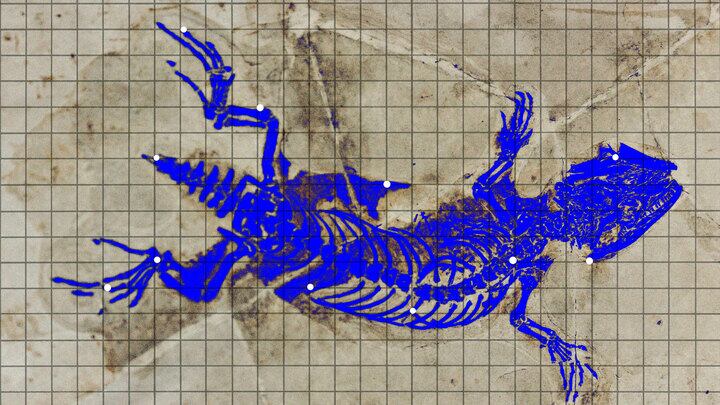A fossil considered significant in understanding the evolution of early reptiles was found to be mostly paint, according to new scientific analysis published on Thursday.
In 1931, a museum worker discovered the remains of a lizard-like creature in the Italian Alps surrounded by a dark shading in the rock. Scientists believe that this rare shadow was carbonized soft tissue. The long-necked five-digit reptile was declared part of a new genus, tridentinosaurus antiquus and in 1959 it was announced to be part of the Protorosauria group. The fossil is estimated to be 280 million years old.
Because the fossil was discovered before much modern technology was invented, it had never been verified using current techniques. A new study, co-authored by Valentina Rossi of University College Cork in Ireland sought to do just that. What they discovered was that while some parts of the fossil were quite real, the outline that made it unique was fake.
The new tests found that there was no melanin in the black trace that surrounded the fossil, suggesting that it did not have an animal origin. The black shadow is now thought to be a paint, consistent with a mechanical preparation meant to expose more of the skeleton.
“Application of paints, consolidates and lacquers on fossil bones was the norm, because that was the only way to protect the specimens from further deterioration. It was also sometimes to embellish specimens by making them sleek and shiny,” Rossi told Ars Technica. “Unfortunately, in the case of Tridentinosaurus, the mechanical preparation did most of the damage and then the application of a black paint created the illusion of a lizard-like animal impression on the surface of the rock.”
The discovery brings new doubt to the veracity of the creature’s assigned taxon, which was determined through the observed length of the creature’s various body parts.






